#chelu
Explore tagged Tumblr posts
Text

Matamata (Chelus fimbriata), family Chelidae, found in river basins in northern and central South America
Photograph by M. Watson
2K notes
·
View notes
Note
To be honest I don't remember what you were posting earlier (tofupupper ring a bell but not strong enough), but this is my Jazz so much I'm so happy to see animals on my dash
🥚


mata-mata!
(Chelus fimbriata)
<3
76 notes
·
View notes
Text
I went to a reptile convention last weekend and I NEED you all to see the little guy I brought home



He is made of epoxy and he is perfect. Look at his stupid little smile I love him so much

9 notes
·
View notes
Note
:)
hi i’m rlly hungover can i have a mata mata turtle fact 🥺🥺
my favorite mata mata fact!
if you look at them directly head on, they have a lovely smile for you :)
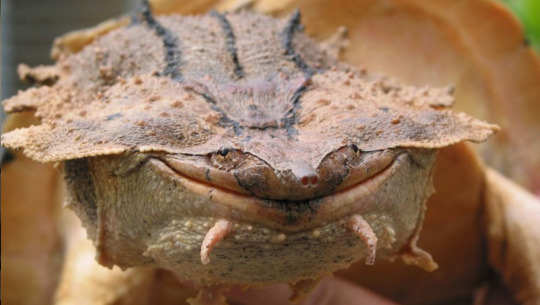
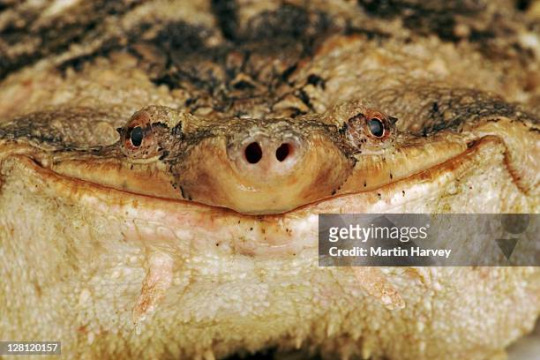


9K notes
·
View notes
Note
Can you do a Mata Mata? Or any turtle really :)
Who could pass up a chance to share the mata mata!! Magnificent choice.
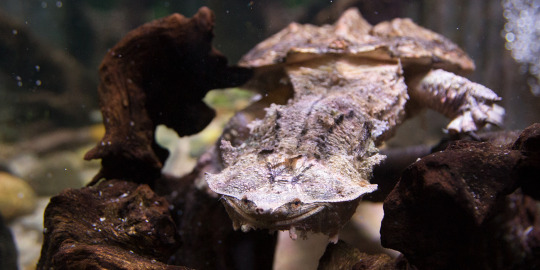
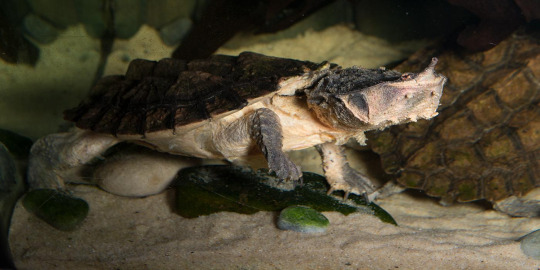
Both photos thanks to the Smithsonian's Reptile Discovery Center.
#south american wildlife#mata mata#matamata#mata-mata#freshwater turtle#turtle#reptilia#testudines#pleurodira#chelidae#animal polls#poll blog#my polls#animals#polls#tumblr polls#reptile#herpblr
46 notes
·
View notes
Text
No potho reposare - Andrea Parodi
youtube
Un concerto struggente e dolcissimo, l’ultimo tenuto da 𝗔𝗻𝗱𝗿𝗲𝗮 𝗣𝗮𝗿𝗼𝗱𝗶 una manciata di giorni prima di lasciarci.
𝐍𝐨 𝐩𝐨𝐭𝐡𝐨 𝐫𝐞𝐩𝐨𝐬𝐚𝐫𝐞 (𝐀 𝐃𝐢𝐨𝐬𝐚, 𝐒𝐚𝐥𝐯𝐚𝐭𝐨𝐫𝐞 𝐒𝐢𝐧𝐢, 𝟏𝟗𝟏𝟓)
𝑛𝑜𝑛 𝑝𝑜𝑠𝑠𝑜 𝑟𝑖𝑝𝑜𝑠𝑎𝑟𝑒, 𝑎𝑚𝑜𝑟𝑒 𝑚𝑖𝑜,
𝑝𝑒𝑟𝑐ℎ𝑒́ 𝑖𝑛𝑐𝑒𝑠𝑠𝑎𝑛𝑡𝑒𝑚𝑒𝑛𝑡𝑒 𝑡𝑖 𝑝𝑒𝑛𝑠𝑜
𝑛𝑜𝑛 𝑑𝑒𝑣𝑖 𝑒𝑠𝑠𝑒𝑟𝑒 𝑡𝑟𝑖𝑠𝑡𝑒, 𝑔𝑒𝑚𝑚𝑎 𝑝𝑟𝑒𝑧𝑖𝑜𝑠𝑎,
𝑛𝑒́ 𝑝𝑟𝑜𝑣𝑎𝑟𝑒 𝑝𝑒𝑛𝑎 𝑜 𝑡𝑢𝑟𝑏𝑎𝑚𝑒𝑛𝑡𝑜
𝑝𝑒𝑟𝑐ℎ𝑒́ 𝑠𝑜𝑙𝑡𝑎𝑛𝑡𝑜 𝑡𝑒 𝑑𝑒𝑠𝑖𝑑𝑒𝑟𝑜,
𝑝𝑒𝑟𝑐ℎ𝑒́ 𝑓𝑜𝑟𝑡𝑒 𝑒̀ 𝑙’𝑎𝑚𝑜𝑟𝑒 𝑑𝑖 𝑐𝑢𝑖 𝑡𝑖 𝑎𝑚𝑜 𝑒 𝑡𝑖 𝑎𝑚𝑜
𝑎𝑚𝑜𝑟𝑒 𝑚𝑖𝑜, 𝑡𝑒𝑠𝑜𝑟𝑜 𝑖𝑛𝑒𝑠𝑡𝑖𝑚𝑎𝑏𝑖𝑙𝑒,
𝑛𝑜𝑛 𝑝𝑟𝑜𝑣𝑜 𝑎𝑚𝑜𝑟𝑒 𝑐ℎ𝑒 𝑝𝑒𝑟 𝑡𝑒
𝑠𝑒 𝑎𝑣𝑒𝑠𝑠𝑖 𝑎𝑙𝑖 𝑖𝑜 𝑣𝑜𝑙𝑒𝑟𝑒𝑖
𝑑𝑎 𝑡𝑒 𝑚𝑖𝑙𝑙𝑒 𝑣𝑜𝑙𝑡𝑒 𝑜𝑟𝑎 𝑑𝑜𝑝𝑜 𝑜𝑟𝑎
𝑎𝑛𝑐ℎ𝑒 𝑠𝑜𝑙𝑜 𝑝𝑒𝑟 𝑠𝑎𝑙𝑢𝑡𝑎𝑟𝑡𝑖,
𝑎𝑛𝑐ℎ𝑒 𝑠𝑜𝑙𝑜 𝑝𝑒𝑟 𝑝𝑜𝑡𝑒𝑟𝑡𝑖 𝑣𝑒𝑑𝑒𝑟𝑒
𝑠𝑒 𝑚𝑖 𝑓𝑜𝑠𝑠𝑒 𝑝𝑜𝑠𝑠𝑖𝑏𝑖𝑙𝑒
𝑎𝑠𝑠𝑢𝑚𝑒𝑟𝑒𝑖 𝑙𝑎 𝑓𝑜𝑟𝑚𝑎 𝑒 𝑙𝑎 𝑐𝑜𝑛𝑠𝑖𝑠𝑡𝑒𝑛𝑧𝑎
𝑑𝑖 𝑢𝑛 𝑎𝑛𝑔𝑒𝑙𝑜 𝑖𝑛𝑣𝑖𝑠𝑖𝑏𝑖𝑙𝑒
𝑒 𝑎𝑙 𝑐𝑖𝑒𝑙𝑜 𝑠𝑜𝑡𝑡𝑟𝑎𝑟𝑟𝑒𝑖 𝑖𝑙 𝑠𝑜𝑙𝑒 𝑒 𝑙𝑒 𝑠𝑡𝑒𝑙𝑙𝑒
𝑝𝑒𝑟 𝑐𝑟𝑒𝑎𝑟𝑒 𝑢𝑛 𝑚𝑜𝑛𝑑𝑜 𝑏𝑒𝑙𝑙𝑖𝑠𝑠𝑖𝑚𝑜 𝑝𝑒𝑟 𝑡𝑒,
𝑝𝑒𝑟 𝑝𝑜𝑡𝑒𝑟𝑡𝑖 𝑑𝑜𝑛𝑎𝑟𝑒 𝑜𝑔𝑛𝑖 𝑏𝑒𝑛𝑒
𝑎𝑚𝑜𝑟𝑒 𝑚𝑖𝑜, 𝑟𝑜𝑠𝑎 𝑝𝑟𝑜𝑓𝑢𝑚𝑎𝑡𝑎,
𝑎𝑚𝑜𝑟𝑒 𝑚𝑖𝑜, 𝑔𝑎𝑟𝑜𝑓𝑎𝑛𝑜 𝑜𝑑𝑜𝑟𝑜𝑠𝑜,
𝑎𝑚𝑜𝑟𝑒, 𝑐𝑢𝑜𝑟𝑒, 𝑖𝑚𝑚𝑎𝑔𝑖𝑛𝑒 𝑎𝑑𝑜𝑟𝑎𝑡𝑎,
𝑎𝑚𝑜𝑟𝑒 𝑚𝑖𝑜, 𝑡𝑜𝑟𝑚𝑒𝑛𝑡𝑜 𝑑𝑒𝑙 𝑐𝑢𝑜𝑟𝑒,
𝑎𝑚𝑜𝑟𝑒 𝑚𝑖𝑜, 𝑠𝑜𝑙𝑒 𝑠𝑐𝑖𝑛𝑡𝑖𝑙𝑙𝑎𝑛𝑡𝑒
𝑐ℎ𝑒 𝑠𝑜𝑟𝑔𝑒 𝑎 𝑜𝑟𝑖𝑒𝑛𝑡𝑒 𝑛𝑒𝑙 𝑚𝑎𝑡𝑡𝑖𝑛𝑜
𝑠𝑒𝑖 𝑖𝑙 𝑠𝑜𝑙𝑒 𝑐ℎ𝑒 𝑚𝑖 𝑖𝑙𝑙𝑢𝑚𝑖𝑛𝑎,
𝑓𝑜𝑟𝑧𝑎 𝑑𝑒𝑙𝑙𝑎 𝑚𝑒𝑛𝑡𝑒 𝑒 𝑑𝑒𝑙 𝑐𝑢𝑜𝑟𝑒;
𝑔𝑖𝑔𝑙𝑖𝑜 𝑓𝑖𝑜𝑟𝑖𝑡𝑜, 𝑐𝑎𝑛𝑑𝑖𝑑𝑜 𝑐𝑜𝑚𝑒 𝑙𝑎 𝑛𝑒𝑣𝑒,
𝑝𝑒𝑟 𝑠𝑒𝑚𝑝𝑟𝑒 𝑎 𝑚𝑒 𝑣𝑖𝑐𝑖𝑛𝑎;
𝑎𝑚𝑜𝑟𝑒 𝑚𝑖𝑜, 𝑎𝑚𝑜𝑟𝑒 𝑚𝑖𝑜, 𝑎𝑚𝑜𝑟𝑒,
𝑝𝑜𝑠𝑠𝑎 𝑡𝑢 𝑣𝑖𝑣𝑒𝑟𝑒 𝑠𝑒𝑛𝑧𝑎 𝑎𝑚𝑎𝑟𝑒𝑧𝑧𝑎 𝑜 𝑑𝑜𝑙𝑜𝑟𝑒
𝑠𝑒 𝑙𝑎 𝑙𝑢𝑐𝑒 𝑑𝑒𝑙𝑙𝑒 𝑠𝑡𝑒𝑙𝑙𝑒 𝑒 𝑑𝑒𝑙 𝑠𝑜𝑙𝑒,
𝑠𝑒 𝑖𝑙 𝑏𝑒𝑛𝑒 𝑐ℎ𝑒 𝑖𝑛 𝑞𝑢𝑒𝑠𝑡𝑜 𝑢𝑛𝑖𝑣𝑒𝑟𝑠𝑜 𝑒𝑠𝑖𝑠𝑡𝑒
𝑖𝑛𝑠𝑖𝑒𝑚𝑒 𝑓𝑜𝑠𝑠𝑖 𝑖𝑛 𝑔𝑟𝑎𝑑𝑜 𝑑𝑖 𝑟𝑎𝑐𝑐𝑜𝑔𝑙𝑖𝑒𝑟𝑒,
𝑐𝑜𝑚𝑒 𝑢𝑛 𝑝𝑎𝑙𝑜𝑚𝑏𝑎𝑟𝑜 𝑚𝑖 𝑖𝑚𝑚𝑒𝑟𝑔𝑒𝑟𝑒𝑖
𝑖𝑛 𝑞𝑢𝑒𝑙𝑙’𝑎𝑏𝑖𝑠𝑠𝑜 𝑝𝑒𝑟 𝑟𝑒𝑔𝑎𝑙𝑎𝑟𝑡𝑖
𝑣𝑖𝑡𝑎, 𝑠𝑜𝑙𝑒, 𝑡𝑒𝑟𝑟𝑎 𝑒 𝑚𝑎𝑟𝑒
𝑠𝑒 𝑓𝑜𝑠𝑠𝑖 𝑢𝑛 𝑝𝑖𝑡𝑡𝑜𝑟𝑒 𝑡𝑖 𝑑𝑖𝑝𝑖𝑛𝑔𝑒𝑟𝑒𝑖,
𝑠𝑒 𝑓𝑜𝑠𝑠𝑖 𝑢𝑛𝑜 𝑠𝑐𝑢𝑙𝑡𝑜𝑟𝑒 𝑡𝑖 𝑟𝑖𝑡𝑟𝑎𝑟𝑟𝑒𝑖
𝑖𝑛 𝑢𝑛𝑎 𝑠𝑐𝑢𝑙𝑡𝑢𝑟𝑎 𝑑𝑖 𝑚𝑎𝑟𝑚𝑜,
𝑖𝑜, 𝑐𝑜𝑠𝑖̀ 𝑝𝑟𝑖𝑣𝑜 𝑑𝑖 𝑡𝑎𝑙𝑒𝑛𝑡𝑜…
𝑚𝑎 𝑞𝑢𝑎𝑛𝑡𝑜 𝑝𝑜𝑐𝑜 𝑣𝑎𝑙𝑔𝑜𝑛𝑜 𝑚𝑎𝑟𝑚𝑜 𝑒 𝑡𝑒𝑙𝑎
𝑎𝑙 𝑐𝑜𝑠𝑝𝑒𝑡𝑡𝑜 𝑑𝑒𝑙𝑙𝑎 𝑣𝑒𝑙𝑎 𝑑’𝑜𝑟𝑜 𝑑𝑒𝑙𝑙’𝑎𝑚𝑜𝑟𝑒?
𝑐𝑜𝑛 𝑔𝑙𝑖 𝑎𝑏𝑏𝑟𝑎𝑐𝑐𝑖 𝑒 𝑖 𝑏𝑎𝑐𝑖 𝑣𝑜𝑟𝑟𝑒𝑖
𝑙’𝑎𝑛𝑖𝑚𝑎 𝑚𝑖𝑎 𝑎𝑛𝑛𝑒𝑔𝑎𝑟𝑒 𝑛𝑒𝑙 𝑡𝑢𝑜 𝑐𝑢𝑜𝑟𝑒,
𝑚𝑎 𝑚𝑖 𝑡𝑜𝑐𝑐𝑎 𝑎𝑚𝑎𝑟𝑡𝑖 𝑑𝑎 𝑙𝑜𝑛𝑡𝑎𝑛𝑜
𝑒𝑝𝑝𝑢𝑟𝑒 𝑚𝑖 𝑐𝑜𝑛𝑠𝑜𝑙𝑎 𝑙𝑎 𝑐𝑜𝑠𝑐𝑖𝑒𝑛𝑧𝑎
𝑐ℎ𝑒 𝑖 𝑓𝑖𝑙𝑖 𝑑𝑒𝑙𝑙𝑎 𝑛𝑜𝑠𝑡𝑟𝑎 𝑣𝑖𝑡𝑎
𝑐𝑜𝑛𝑑𝑖𝑣𝑖𝑑𝑎𝑛𝑜 𝑙𝑎 𝑠𝑜𝑟𝑡𝑒 𝑒 𝑑𝑒𝑙 𝑡𝑢𝑜 𝑎𝑚𝑜𝑟𝑒
𝑢𝑛 𝑡𝑟𝑎𝑚𝑜𝑛𝑡𝑜 𝑖𝑛 𝑓𝑖𝑎𝑚𝑚𝑒, 𝑙’𝑎𝑢𝑟𝑜𝑟𝑎,
𝑙’𝑎𝑙𝑏𝑎, 𝑙𝑎 𝑔𝑙𝑜𝑟𝑖𝑎 𝑑𝑒𝑙 𝑠𝑜𝑙𝑒,
𝑖 𝑝𝑟𝑜𝑓𝑢𝑚𝑖 𝑒 𝑖 𝑐𝑎𝑛𝑡𝑖 𝑑𝑒𝑙𝑙𝑎 𝑝𝑟𝑖𝑚𝑎𝑣𝑒𝑟𝑎,
𝑙𝑒 𝑏𝑟𝑒𝑧𝑧𝑒 𝑙𝑒𝑔𝑔𝑒𝑟𝑒, 𝑖𝑙 𝑣𝑒𝑛𝑡𝑜 𝑙𝑢𝑐𝑒𝑛𝑡𝑒
𝑑𝑒𝑙 𝑚𝑎𝑟𝑒, 𝑙’𝑎𝑧𝑧𝑢𝑟𝑟𝑜 𝑑𝑒𝑙 𝑐𝑖𝑒𝑙𝑜:
𝑡𝑢𝑡𝑡𝑒 𝑙𝑒 𝑐𝑜𝑠𝑒 𝑝𝑖𝑢̀ 𝑏𝑒𝑙𝑙𝑒 𝑖𝑜 𝑙𝑒 𝑑𝑜𝑛𝑜 𝑎 𝑡𝑒
*
Non potho reposare amore e coro
pensende a tie so' donzi momentu.
No istes in tristura, prenda e oro
né in dispiaghere o pensamentu.
T'assiguro chi a tie solu bramo,
ca t'amo forte t'amo, t'amo, t'amo.
Amore meu prenda de istimare
s'affettu meu a tie solu est dadu;
s'aio gittu sas alas a bolare,
milli bortas a s'ora fio boladu;
pro benner nessi pro ti saludare,
s'attera cosa non a t'abbissare.
Si m'esseret possibile d'anghelu
d'ispiritu invisibile piccabo
sas formas; che furabo dae chelu
su sole e sos isteddos e formabo
unu mundu bellissimu pro tene,
pro poder dispensare cada bene.
Amore meu, rosa profumada,
amore meu, gravellu oletzante,
amore, coro, immagine adorada,
amore coro, so ispasimante,
amore, ses su sole relughente,
ch'ispuntat su manzanu in oriente.
Ses su sole ch'illuminat a mie,
chi m'esaltat su coro e sa mente;
lizu fioridu, candidu che nie,
semper in coro meu ses presente.
Amore meu, amore meu, amore,
vive senz'amargura nen dolore.
Si sa lughe d'isteddos e de sole,
si su bene chi b'est in s'universu
haret podidu piccare in-d'una mole
commente palombaru mi fio immersu
in fundu de su mare e regalare
a tie vida, sole, terra e mare.
Unu ritrattu s'essere pintore
un'istatua 'e marmu ti faghia
s'essere istadu eccellente iscultore
ma cun dolore naro "no nd'ischia".
Ma non balet a nudda marmu e tela
in confrontu a s'amore, d'oro vela.
Ti cherio abbratzare ego et vasare
pro ti versare s'anima in su coro,
ma dae lontanu ti devvo adorare.
Pensende chi m'istimas, mi ristoro,
chi de sa vida nostra tela e tramas
han sa matessi sorte pruitte m'amas.
Sa bellesa 'e tramontos, de manzanu
s'alba, s'aurora, su sole lughente,
sos profumos, sos cantos de beranu
sos zefiros, sa bretza relughente
de su mare, s'azurru de su chelu,
sas menzus cosa do, a tie anzelu.
12 notes
·
View notes
Text
I have literally no idea how my cat’s actual name - Selene became chelene and now chelu 😭😂 I ruin names
He does look like chelu tho 🥹♥️
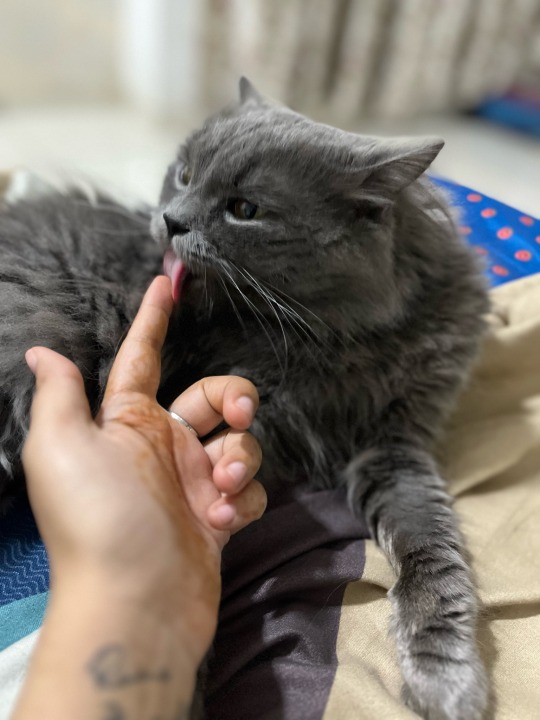
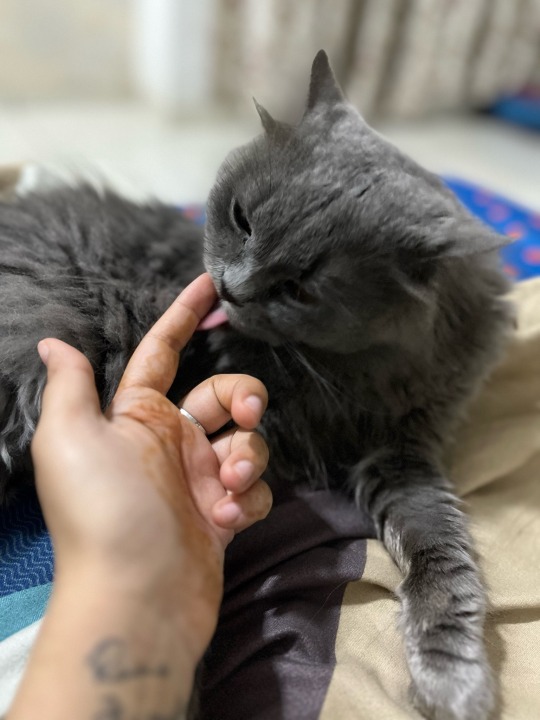
25 notes
·
View notes
Text
So this one was an absolute blast (and sometimes pain) to research in preparation for the stream and I love how Josch's piece came out.
And so that all that info isn't just hidden away I'll break this one down beyond the croc stuff. Big part of this was defining what would be used, which brings the often overlooked but important distinction between the Pebas Megawetlands as a whole and the Pebas Formation in particular. Obviously the latter was used for this piece, which largely removed other fossil localities like Fitzcarrald and most importantly La Venta of the Honda Group from the resource pool (La Venta being well known for its mammal fossils), but despite this there was still a lot of ground to cover.
Starting with the crocs, the Pebas Formation might just be the formation with the single highest Cenozoic croc diversity. Sure in total theres more taxa in places like Urumaco, but in that case they are spread out across very different biomes. Meanwhile, all 7 Pebas crocodilians are known from the same localities. Of those 7, 4 are featured in the piece, covering most of the different morphotypes. The ones left out were Paleosuchus sp. (an extinct species of dwarf caiman), Kuttanacaiman and Caiman wannlangstoni (the latter two being ecologically too similar to one that is featured).
Images by Joschua Knüppe, Wann Langston, Andrzej Wolniewicz and yours truly.
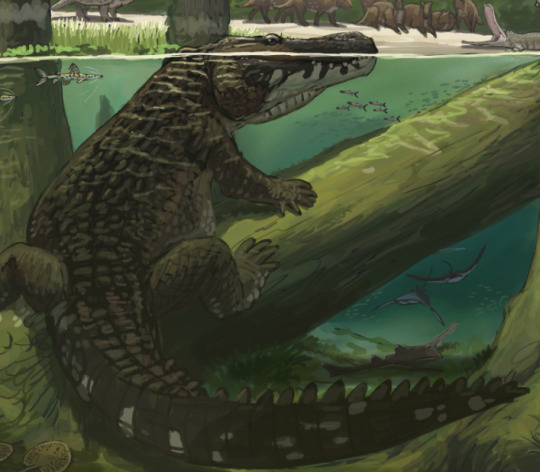
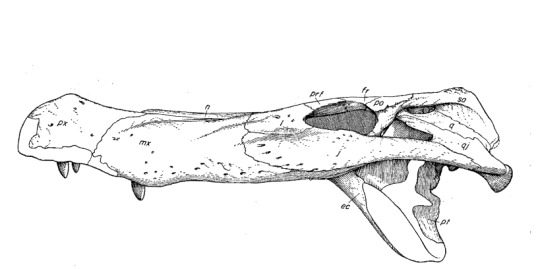
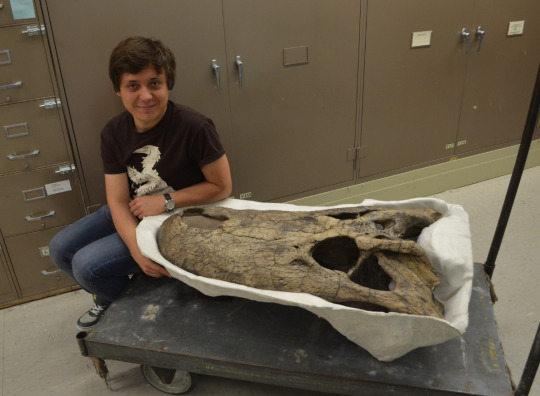


The first one that obviously had to be included was Purussaurus neivensis. I wager most are familiar with Purussaurus at least by hearsay, generally as "one of the biggest crocodilians" and all those estimates upwards of 10 meter in length. Purussaurus neivensis however is the oldest species in this genus and as such as nowhere near as big and has a notably less boxy head. It was still big mind you, when I scaled it some years ago I still got a size of 6 to 7 meters, though a paper published after that proposed a more modest 5 to 4 meters. Multiple localities have yielded bones of this thing and the locality of Na 069 has sloth fossils that bear bitemarks likely attributed to P. neivensis.
Images by Josch, yours truly and Salas-Gismondi R. et al.
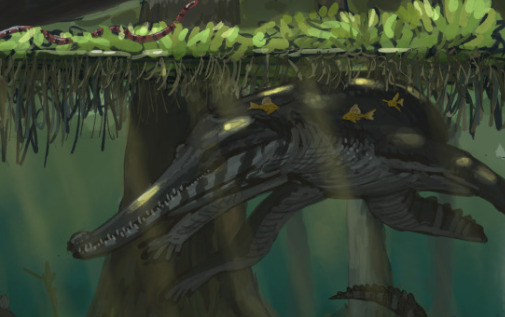
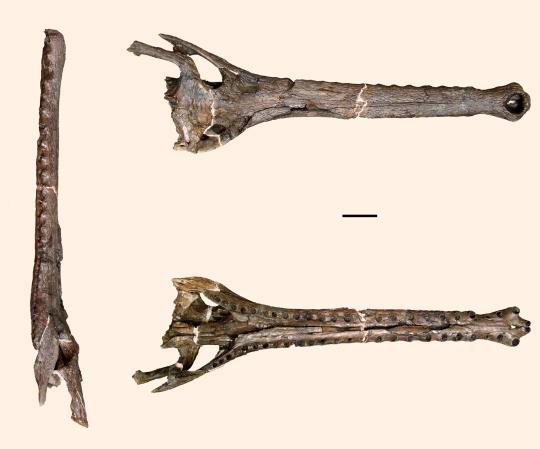
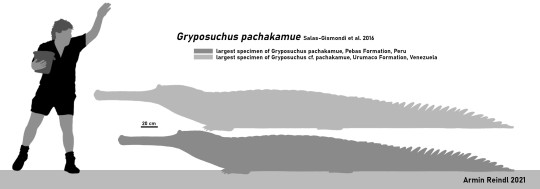
The second largest animal featured here is Gryposuchus pachakamue. Now as with Purussaurus, Gryposuchus is probably best known from its giant relatives like G. croizeti. Again the species encounted within the Pebas Formation is smaller and has some major anatomical differences, namely the fact that the eyes aren't telescoped. Quick context, if you look up the skull of modern gharials and derived Gryposuchus, you'll find that the rims of their eyes are raised, which elevetes the eyes. That's telescoping and not present in G. pachakamue. This might factor into habitat preferences and ecology. Telescope-eyed Gryposuchus are present in the Pebas Megawetlands, but do appear to stick to the edges and areas with flowing waters, like rivers, whereas G. pachakamue was found deeper in the oxygen-poor swamps. Another cool thing about this guy is that its the only crocodilian from the formation thats not a caiman, but a gharial. Long story short, gharials briefly colonized South America, thrived but sadly went extinct. Tho its possible that todays Indian Gharials are descendents of this South American radiation.
Artwork by Josch, skull reconstructions by Wann Langston, size comparisson by me
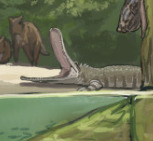
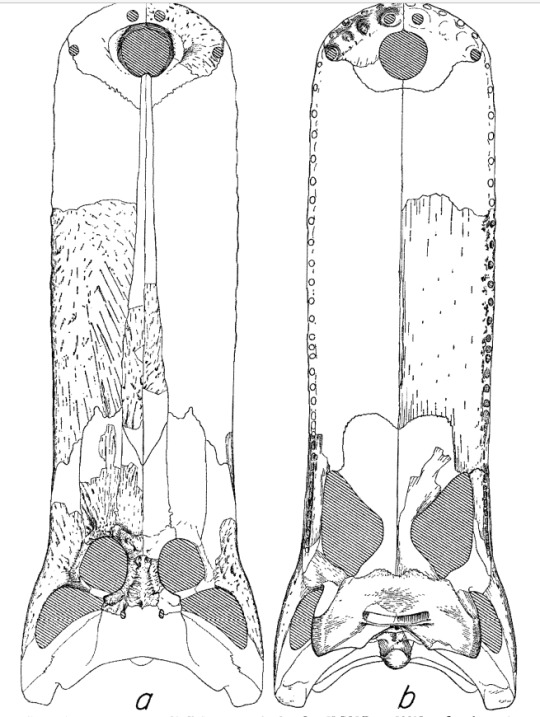
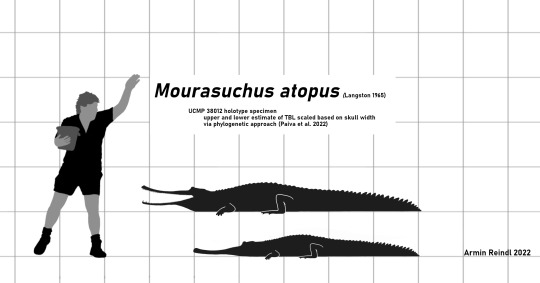

Third on our list is Mourasuchus atopus, which, I mean look at it. Mourasuchus takes us back to the caiman subfamily and it might just be the weirdest of the bunch. A flattened surfboard like head, highly telescoped eyes, lots of small teeth. These things are an enigma. Again the species present in this piece is on the smaller end of the spectrum and in general these animals are often way oversized in artwork and popular literature. The more interesting thing tho is their diet, which we still don't quite get. Theres been multiple hypothesis, including that it was a herbivore or that it waited with open jaws for fish to pass by. The hypothesis that has recieved the most attention is "filter feeding", tho the term is probably missleading as I'll explain. The idea is that Mourasuchus may have fed on small prey that could have hid in substrate or appeared in large numbers. Accordingly, it has often been depicted with a gullar pouch or similar to whales, largely based on a hypothesis erected for the unrelated Stomatosuchus, tho said hypothesis is not well supported either. Given that it lacks any obvious filter apparatus and may not have actually filtered anything, its perhaps more apt to describe it as a gulp feeder as used by Cidade et al. in their study. Which nicely leads into the name gulper caiman thats occasionally floated around.
Images by Joschua, Kevin Montalbán-Rivera and me
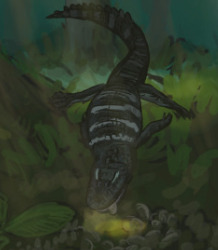

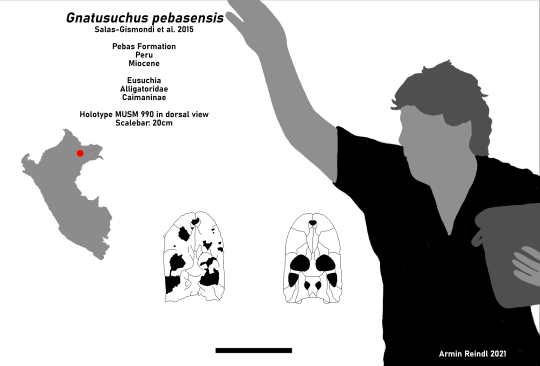
The final croc featured in this piece is Gnatusuchus (Nose Crocodile), the smallest of this selection at only around 1.5 meters long but not the smallest overall (that honour goes to the unnamed Paleosuchus species). Gnatusuchus represents the crusher morphotype. Basically, during this time period the wetlands had an incredibly diverse mollusc fauna with plenty of shellfish. These shellfish became prey to a variety of caimans that had blunt, globular teeth and generally shorter snouts. The afforementioned Kuttanacaiman and Caiman wannlangstoni both fall into this camp, but Gnatusuchus was probably the most extreme with its shovel-like skull and very round teeth. It is thought that they were the main predator of clams in the oxygen poor swamps, given that as air-breathers they didn't take issue to the water conditions in the same way that fish did.
Live reconstructions by Joschua, Paradracaena skull by Matt Borths, Pebasiconcha size by Ta-tea-two-te-to
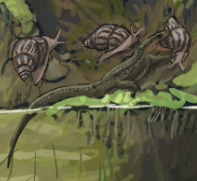
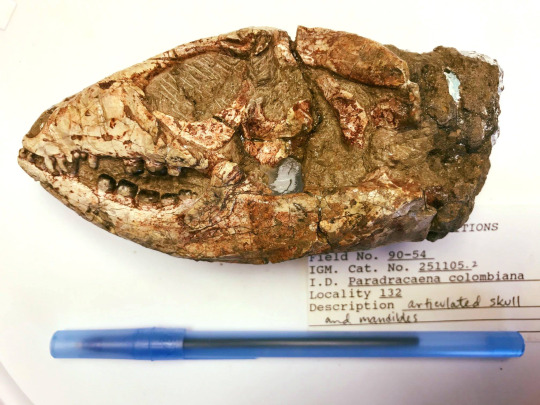

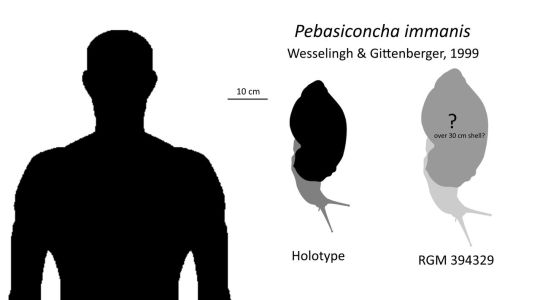
Crocs out of the way lets move on to other reptiles with Paradracaena and its would-be prey that I'll just cover here for simplicity. Now Paradracaena is an extinct relative of today's Caiman lizards and tegus and a good example of where La Venta really comes to help. The skull featured above is from La Venta for example, but we do have less complete fossils of this animal from the Pebas Formation, after all they are located within the same wetland system. Paradracaena was large, larger than modern caiman lizards and tegus, yet this one overestimates just how big its prey is. Pebasiconcha is among the largest known terrestrial snails with a size of possibly up to 30 cm (25 at the least of it), larger than even today's giant african land snails.
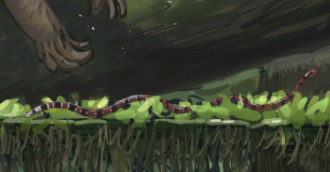
More hidden is this one, Colombophis, a relative of today's false coral snake. Now problem is, I know little to none about this animal so I'm afraid I cannot provide that much information on it other than that it was widespread across the megawetlands and its successor systems during the Miocene.
Joschua Knüppe and the University of California Museum of Paleontology
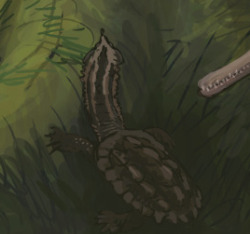
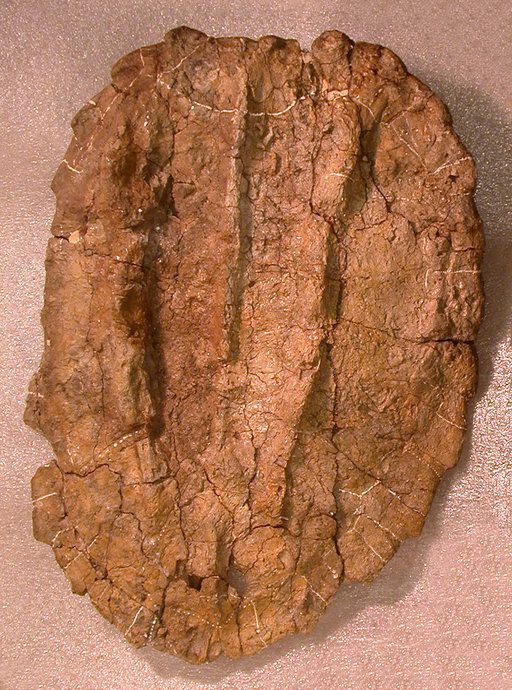
The final reptile to be covered is this guy, Chelus colombiana aka the Giant Mata Mata. This is another one that I know less about than I like and its been on my list to research and write about for a while, but to keep it brief Chelus colombiana is a relative of the modern mata mata turtle that reached a shell length of upwards of 70 centimeter. Given that Mata Matas have stupidly long necks, the full animal would probably exceed a meter in length. If I get around to it I'll go on a deep dive in the future, but I'll make no promises.
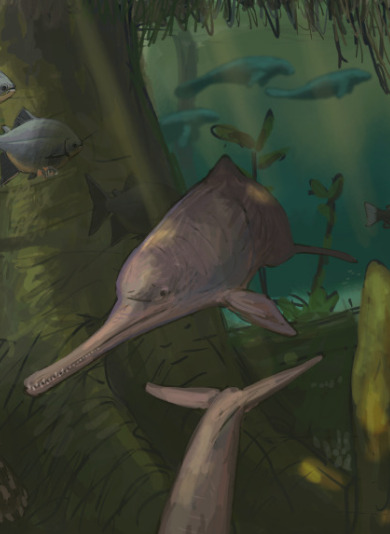
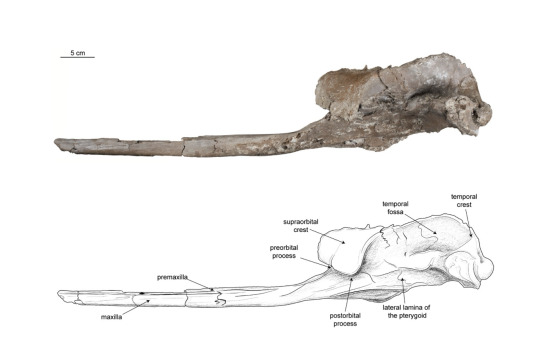
People who follow my blog should be familiar with this animal, given I've written a summary on it shortly after it was described (shameless plug here). Several cool things about this guy come to mind. Not only is Pebanista the largest river dolphin we know (at least of those that are described), measuring 3.5 meters in length, but its also entirely unrelated to the river dolphins that inhabit the Amazon today. Instead, as one might guess from the name, Pebanista is most closely related to the genus Platanista, which includes the Ganges and Indus river dolphins of South Asia. This family used to be a lot more common during the Oligocene prior to the rise of orcas, sperm whales and real dolphins, and both our modern ones and Pebanista seem to have fled competition into areas further inland. In the back you can also see manatees. Better known from other regions of the wetlands, manatees are known from the Pebas Formation itself through ribs and teeth.
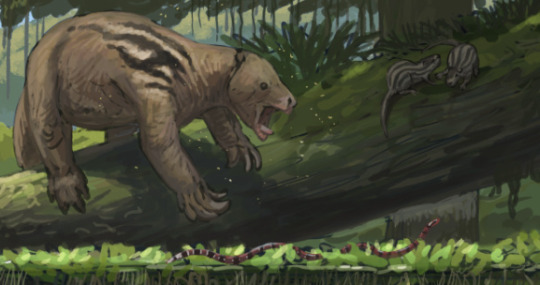

Moving on to the remaining mammal fauna. Again this is far from my expertise so I'll have to keep things relatively brief. First and most obvious we got the ground sloth, Magdalenabradys. Remember when I mentioned that we have caiman bite marks on some fossil remains, yeah its this guy. Which makes it all the better that in Josch's illustration the latter seems to sneak up on the former. Now when said bitemarks were described the sloth was identified as Pseudoprepotherium, but some digging by the other members of Paleostream has found that the Pebas specimens were later moved to the genus Magdalenabradys (hell the name of the type species even references how common this confusion is). Next to it you'll find Potamarchus, relatives of today's Pacarana and Josephoartigasia, the largest rodent ever. A more distant cousin to these guys is seen in the background next to Mourasuchus, Neoepiblema. THe morphology of the hindlimbs and pelvis suggest that they could have been digging or swimming animals, the latter seeming quite likely given the types of environments inhabited by them. And finally there's the glyptodont, specifically, bear with me, Parapropalaehoplophorus. Not making this up. Now a consistent theme with the Pebas Formation mammals is how little we know of them. Again, La Venta is easily the superior formation when it comes to mammal fossils, wheras the Pebas Formation proper mostly preserves fragments of taxa found in the former.
Fish I'll just keep to a quick footnote, having reached another area where I just know little about these animals to the point where I feel like without doing a proper deepdive I might just accidentally get something wrong. The most interesting might be the cow-nosed rays and the sawfish. Sawfish of course still inhabit the Amazon to this day, so perhaps this ones not so surprising. The cow-nosed ray stands out more, but several papers indicate the presence of either Myliobatis (the eagle ray) or Rhinoptera (the cownose ray). The latter ended up being chosen due to the work of Chabain et al., who also named three different species of Potamotrygon (bottom left next to Purussaurus), which are your typical South American river rays. The rest of the fish fauna here falls into your typical modern Amazonian fauna (Pacus, Plecos, Piranhas, Cichlids and various catfish) with Pogonias being the one outlier featured, as its closest kin are found in the Atlantic Ocean (tho they do occasionally venture into freshwater from what I could gather). In general there are some fossil fish from the formation that are either offshoots of lineages that are still marine to this day or early offshoots of groups that would eventually become fully freshwater, highlighting how these fish, much like the dolphins, took the opportunity presented by these enormous wetlands to expand into new habitats.
And thats all I have to say, thankfully I somehow managed to keep this under Tumblrs 30 picture limit.
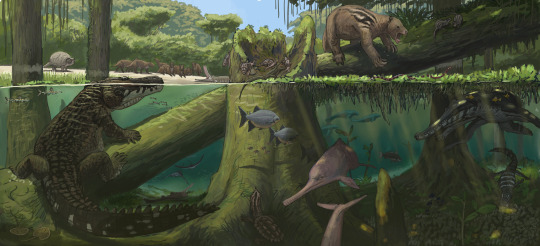
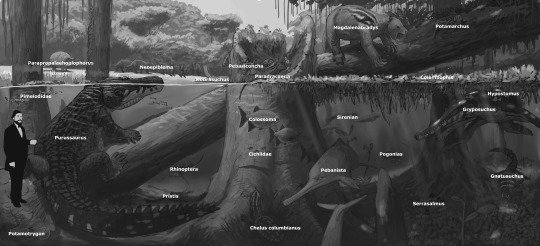
Result from the Pebas formation #paleostream!
Not as diverse as some other places he have hit and yet, we weren't even able to put in all the crocs.
#pebanista#gryposuchus#purussaurus#gnatusuchus#mourasuchus#chelus colombiana#paradracaena#pebasiconcha#sawfish#pacu#piranha#pebas#pebas formation#pebas megawetlands#peru#miocene#cenozoic#prehistory#paleontology#palaeoblr#paleostream#long post#fossils#magdalenabradys#neoepiblema#science#biology#swamp#Parapropalaehoplophorus#glyptodont
850 notes
·
View notes
Text
youtube
Non potho riposare amore ‘e coro Pensende a tie so d'onzi momentu No istes in tristura prenda ‘e oro Ne in dispiaghere o pensamentu
T'assicuro che a tie solu bramo Ca t'amo forte t'amo, t'amo e t'amo
Si m'esser possibile d'anghelu S'ispiritu invisibile piccabo
T'assicuro che a tie solu bramo Ca t'amo forte t'amo, t'amo e t'amo
Sas formas E furabo dae chelu su sole e sos isteddos E formabo unu mundu bellissimu pro tene Pro poder dispensare cada bene Unu mundu bellissimu pro tene Pro poder dispensare cada bene
Non potho reposare amore ‘e coro Pensende a tie so d'onzi momentu T'assicuro che a tie solu bramo Ca t'amo forte t'amo, t'amo e t'amo
T'assicuro che a tie solu bramo Ca t'amo forte t'amo, t'amo e t'amo
No Photo Reposare - Tazenda cantata da Andrea Parodi
Titolo originale “A Diosa”, ma più conosciuta come “No Potho Reposare“, è una canzone scritta nel 1920 dal compositore Giuseppe Rachel. Le parole dell’omonima poesia furono scritte nel 1915 dall’avvocato Salvatore Sini di Sarule.
Dal 1921 questo brano iniziò a far parte del repertorio dei cori più importanti della Sardegna. Primo il “Corpo musicale filarmonico” di Nuoro diretto dallo stesso Rachel. Nel 1978 Maria Carta incise il pezzo in un 45 giri per la Polydor. Successivamente artisti come i Tazenda, Cordas e Cannas, Andrea Parodi, Duo Puggioni la inclusero nei loro repertori. Dagli anni novanta in poi la canzone è stata cantata da numerosi cori nazionali ed internazionali.
Credo sia,a mio parere, una delle canzoni d’amore più belle in assoluto! Ecco a voi il testo e la traduzione. (https://www.manuingiroperlasardegna.it/no-potho-reposare-testo/#google_vignette)
Non riesco a riposare amore del cuore Sto pensando a te ogni momento Non essere triste gioiello d’oro Ne addolorata o preoccupata.
Ti assicuro che desidero solo te
Perché ti amo forte, ti amo e ti amo.
Se mi fosse possibile prenderei Lo spirito invisibile dell’angelo
Ti assicuro che desidero solo te
Perché ti amo forte, ti amo e ti amo.
Le forme ruberei dal cielo il sole e le stelle E creerei un mondo bellissimo per te Per poterti regalare ogni bene Un mondo bellissimo per te Per poterti regalare ogni bene.
Non riesco a riposare amore del cuore Sto pensando a te ogni momento Ti assicuro che desidero solo te Perché ti amo forte, ti amo e ti amo
Ti assicuro che desidero solo te
Perché ti amo forte, ti amo e ti amo
3 notes
·
View notes
Text
Tumblr's Favourite Animal - CONTENDERS (#8)
Continuing with the introductions...
That's a snazzy looking turtle! It's called mata mata (Chelus fimbriata) and it comes from the Amazon river basin and the eastern Guianas. Mata matas were thought to have also lived in the Orinoco basin, but as it turns out, those populations belong to another species. Its shell is reminiscent of a floating piece of bark, and its head resembles a fallen leaf. It lies on the riverbed, breathing through its long snout and using its skin flaps to blend in with its surroundings. When an unsuspecting fish arrives, it ambushes its prey by sucking it in through its wide mouth.
Nominated by @lyzanewe

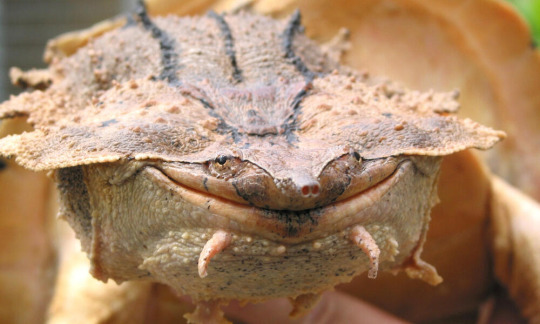
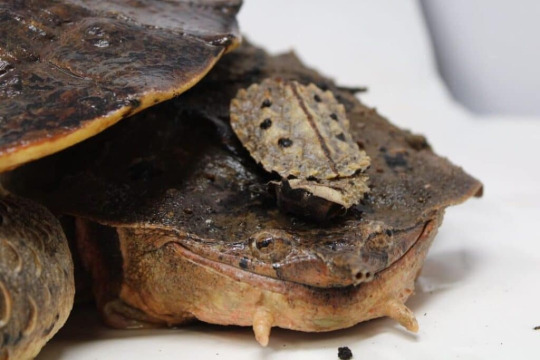
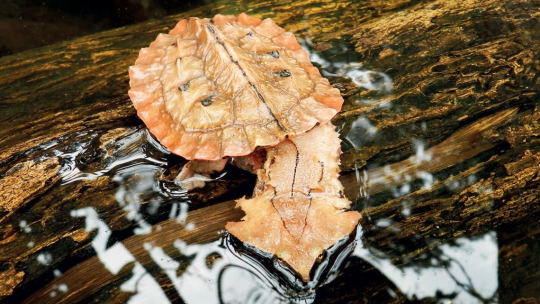
#animals#animal#tournament#tumblr tournament#bracket tournament#tournament poll#tumblr's favourite animal#tumblr's favorite animal#mata mata#matamata#turtle
10 notes
·
View notes
Text






WOA WOA EOA, Engativatrip, con mi real pinki Maxxjo, comimos perrito mexicano yumi yumi y me fixearon los dientes posteriori, tengo la sapa ppperra MAGA OSCURA en el chelu ^w^, all for la sonrisa, just sonrían q la vida es mero chiste. (tengo bozo. boso. voso. vozo)^^
Proximo Bogotur
bogota is:
#bogota#eric bogosian#spotify#soundcloud#blackpink#classical art#classical paintings#mcr#classic art#painting#roses_are_rosie#vintage art#dear diary#teusaquillo#bogotown#solosubalocas#besitos en la cola#bay bay#Spotify
2 notes
·
View notes
Text


Orinoco Matamata (Chelus orinocensis), family Chelidae, found in northern South America in the Orinoco, upper Rio Negro–Branco and Essequibo basins, and in Trinidad.
First described as a distinct species in 2020.
photographs: Vargas-Ramirez et al., RatioTile
#matamata#mata mata#turtle#chelus#chelidae#reptile#herpetology#side neck turtle#animals#nature#south america
324 notes
·
View notes
Photo

DN66A between Băile Herculane and Petroșani, Județul Hunedoara, Romania by G. Chelu
2 notes
·
View notes
Text
Langblr Word of the Day Challenge

Day 1: Rain
SARDINIAN: proja / proida 💧
Create a vocab list of at least 5 words based around the word
temporàda — storm ⛈️
delùviu / dilùviu — deluge 🌧️
arrosìna — drizzle 🌦️
landiréddu — hail 🌨️
ni — snow ❄️
nui — cloud ☁️
tronu — thunder 🌩️
lampu — lightning ⚡
celu — sky 🌌
- cobertu — overcast 🌫️
- annungiosu — cloudy 🌥️
arcu de chelu — rainbow 🌈
paràcua / peracu — umbrella ☂️
Write a paragraph (or more) based around the word / one sentence containing the word
Apu pigau su paràcua poita apu biu proja a foras de sa ventana.
(not sure this is correct, probably sounds unnatural to a native speaker, but I have no way to check with one right now :c)
#langblrwotdchallenge#Langblr Word of the Day Challenge#sardinian langblr#sardinian language#langblr#studyblr#study blog#uni student#uniblr#sardinia#sardo
4 notes
·
View notes
Text
youtube
E questa notte poi , la mia per te.
Non potho riposare amore ‘e coro Pensende a tie so d'onzi momentu No istes in tristura prenda ‘e oro Ne in dispiaghere o pensamentu
T'assicuro che a tie solu bramo Ca t'amo forte t'amo, t'amo e t'amo
Si m'esser possibile d'anghelu S'ispiritu invisibile piccabo
T'assicuro che a tie solu bramo Ca t'amo forte t'amo, t'amo e t'amo
Sas formas E furabo dae chelu su sole e sos isteddos E formabo unu mundu bellissimu pro tene Pro poder dispensare cada bene Unu mundu bellissimu pro tene Pro poder dispensare cada bene
Non potho reposare amore ‘e coro Pensende a tie so d'onzi momentu T'assicuro che a tie solu bramo Ca t'amo forte t'amo, t'amo e t'amo
T'assicuro che a tie solu bramo Ca t'amo forte t'amo, t'amo e t'amo
1 note
·
View note
Text

Cebú Ocean Park python selfie
Going gaga with a Moran (Green Tree Python / Morelia viridis) at the Cebú Ocean Park & Events Center, in Barangay Mambaling, Cebú City. Ever since I was I child, I have been intrigued by the beauty of the Moran (python in Papua New Guinea’s Tok Pisin language) through the books and wildlife documentaries I have seen in my youth. I am most intrigued by its very cold stare as it lies in the coiled “saddle” position while it is resting among the branches. However, there was no means to see it in life until now; as the moran can be only found in New Guinea as well as some islands in Australia and Indonesia. So you can imagine my glee in seeing the moran face-to-face and in the classic saddle stance.
The exhibits at the Cebú Ocean Park are a cornucopia of creatures that many exotic animal collectors would drool to have. I, on the other hand, am very happy to finally come close to these beasts after studying them in books since my childhood:
Chupa (Giant Bullfrog / Pyxicephalus adspersus) from sub-Saharan Africa
Aside from being called a chupa in Swahili; the bullfrog is called brulpadda in Afrikaans, yeberē firogi in Amharic, ng'ombe in Chichewa, baƙar fata in Hausa, ibimasa in Kinyarwanda, senqanqane in Sesotho, dibi in Somali, isele in Xhosa, akọmalu in Yoruba, ixoxo in Zulu.
Gráinneog (European hedgehog / Erinaceus europaeus) which I first became aware through Lewis Carroll’s 1865 novel “Alice’s Adventures in Wonderland”
Kadradraka (Malagasy hissing cockroach / Gromphadorhina portentosa) from Madagascar
Mata-mata Turtle (Chelus fimbriata) from South America
Kenhionnió-Ron (Alligator Snapping Turtle / Macrochelys temminckii) from North America
Kenhionnió-Ron is the name of the snapping turtle to the Mohawk people, while the miskwaadesi is the name in the Ojibwe language
Aside from these animals, there were various species of Tarantula (family Theraphosidae, genus Phlogiellus) on display that would make an exotic pet collector orgasm on the spot.
The Cebú Ocean Park & Events Center opened in 2019, and it is the largest ocean park in the Philippines that covers 1.5 hectares (3.7 acres).
This picture was taken circa 2024
0 notes